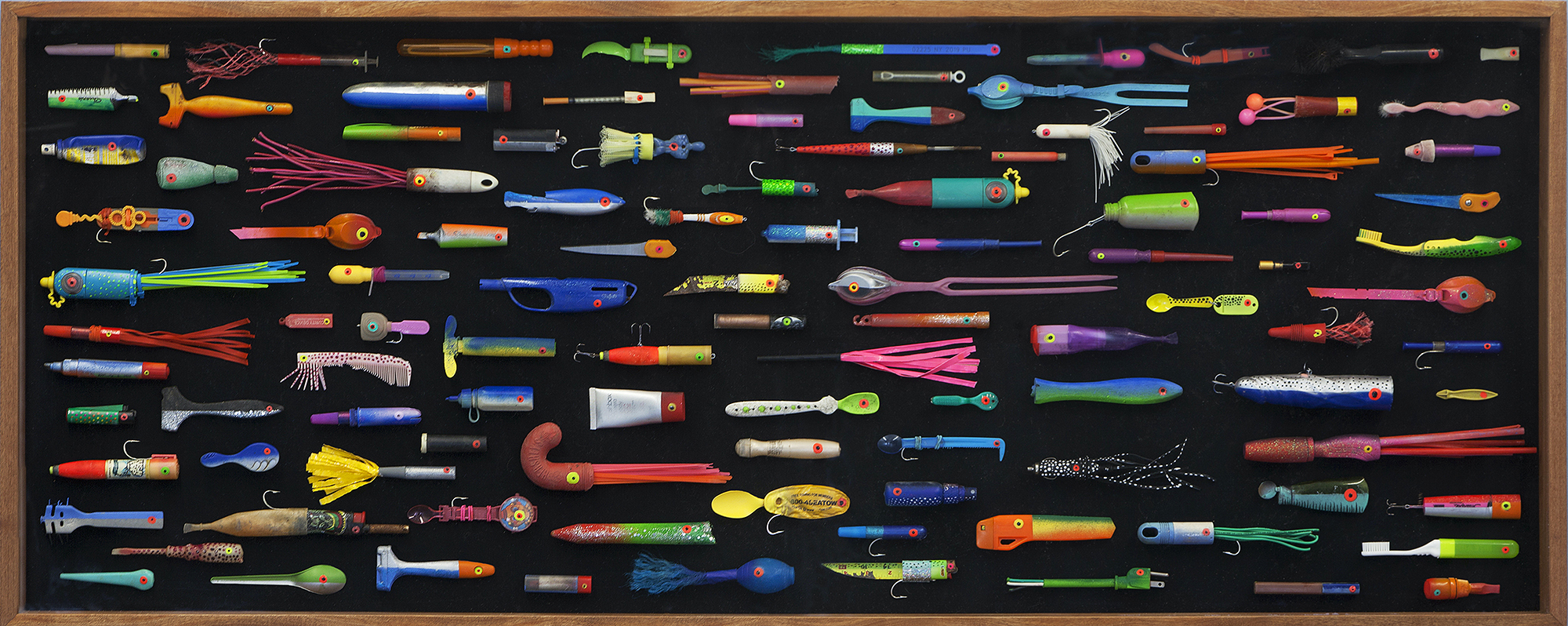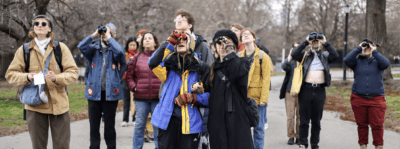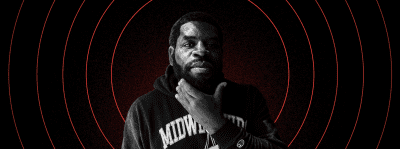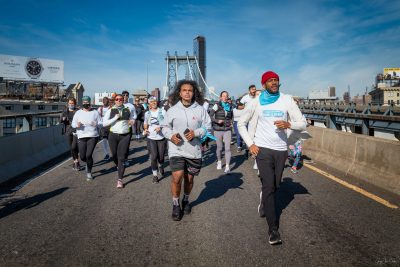Photo illustration by Johansen Peralta
Anne Pasternak takes us behind the scenes at the Brooklyn Museum
The museum director also describes her first-ever trip to a museum, and explains why the show 'Pose' nearly gave her a heart attack
Like what you’re hearing? Subscribe to us at iTunes, check us out on Spotify and hear us on Google, Amazon, Stitcher and TuneIn. This is our RSS feed. Tell a friend!
Let’s go back to 1823 for a minute. James Monroe is president. It’s the Era of Good Feelings. James Fenimore Cooper and Mary Shelly each have new books out. Brooklyn is not yet part of New York City and the first incarnation of the Brooklyn Museum is established as the Brooklyn Apprentices’ Library in Brooklyn Heights. It was very much a different world.
Next year, the Brooklyn Museum will turn 200. Since 2015, Anne Pasternak has been its director, the first woman to lead one of New York’s so-called encyclopedic museums. She succeeded Arnold L. Lehman who had been the museum’s director for nearly 18 years, during which time he reshaped the institution in significant ways, broadening its programming and seeking out a larger, more diverse audience. He mounted exhibits about the history of the sneaker and “Star Wars,” for example, while also touting important new artists like Swoon and Ai Wei Wei.
Pasternak, for her part, has both embraced and extended that populist, community-centric legacy: Think huge installations about David Bowie and Christian Dior as well as more high brow shows like the current Duke Riley exhibit that touches on climate change and Virgil Abloh’s “Figures of Speech.”
She is also doing work behind the scenes at the museum — like maintenance work and revamping internal systems, which may not sound as sexy as a Virgil Abloh exhibit, but will propel the Brooklyn Museum well into its second 200 years.
Pasternak is this week’s guest on “Brooklyn Magazine: The Podcast” where she discusses all of that, plus the museum’s role in the community of Central Brooklyn. We discuss how she sees her mandate and she gives us a little tour of her favorite parts of the museum. We also talk about her first-ever trip to a museum, when she was 4, and why she almost had a “heart attack” when she watched the first episode of “Pose.”
This transcript has been lightly edited for readability and flow.
We’ll cover a range of topics and your background and the museum’s history and all that. But right now, you’ve got this Virgil Abloh exhibit, which is really exciting and interesting and he’s obviously a fascinating person in his own right, gone way too soon. How did the exhibit come to be? What was the genesis of this and what’s the goal of it?
Virgil’s from Chicago. He lived in Chicago and he was having an exhibition, a survey exhibition of his work at the Museum of Contemporary Art in Chicago. He knew the show would travel and he wanted its last venue to be at the Brooklyn Museum. I was very excited about that because Virgil is a really trailblazing artist. There’s hardly a creative practice that he didn’t engage in very seriously and do really pretty great work from DJ-ing to fashion, industrial design, visual art, architecture. You name it, he basically did it. And it was also very important for Virgil that young people who look like him, in other words, young, Black, brown people, would see that they had opportunities to work in influential big companies to share their creative genius, to get paid for it and to not have their ideas and their work stolen from them, which has historically been the case.
Did he know that he was sick when you guys were engaging on this?
He did but I didn’t. Actually a lot of his didn’t know. And I saw him about a week before he died in Qatar and looked like the picture of health. So when I heard the news just days later that he had passed, I was utterly shocked.
I’m sure. It’s so sad. He’s one of those artists and Renaissance men that is a household name some places, but other places, he’s not. For people listening who are like, “Well, who was this guy?” How would you break that down?
I always refer to Virgil as somebody who had explosive creativity and a real thirst to do just about everything he could to work with any person or any company that he thought was excellent in their craft. So it could range from Louis Vuitton where he was a menswear designer to working with Ikea on a rug, to working with young hip hop artists, which became the A$AP crew. And he was great at discovering talent and nurturing talent. He was somebody who was really exposing the ironies and contradictions in our everyday lives, in our everyday products, in very subversive and brilliant ways.
Is there an aspect of, or a thing in the exhibit, that you would point to for people to absolutely, this is the cornerstone or linchpin?
Well, there’s so many of them, but just take for example, one of the first pieces you’ll see are two suitcases. One of them is a clear suitcase. Such an absurd thing. I remember thinking it was so cool and I wanted to buy one, but then I was like, “I don’t want people to see my underwear.” This was 9/11. This is a time period where we had increased security and surveillance on our bodies and he wanted to be, “You want transparency? You want to see what’s in my luggage? You can see everything. Everybody can see it.” It’s democratic in a way. But then he also was playful and filled it up with toy water guns.
It’s also a commentary on the surveillance state.
Absolutely. Then he did a higher end one for Louis Vuitton,. And there’s a chain on it, and that is a clear reference to issues around mass incarceration. It also deals with slavery. He pokes at things and it’s right there if you’re looking. He also makes it the brightest color on the suitcase, [so you can’t] not confront it.

‘Dollar a Gallon,’ by Virgil Abloh, courtesy Brooklyn Museum
He compels you to look. Talk about considerations of representation in the art world, not just from Virgil’s point of view, but from your point of view and how they’ve come to the fore, for the good, in recent years. Issues of diversity, issues of both representation in art, and of transparency of where art actually originated from versus where it happens to be on display, and connecting with more diverse both artists and audiences.
In recent years, we are seeing what I hope is systemic change within the cultural sphere, including within museums. At the Brooklyn Museum, social good has always been part of our DNA. Inclusion has always been part of our DNA. Have we always gotten it right? No. Of course we reflected the taste and interests and attitudes of our time. My predecessor, for example, Arnold Lehman, who was director of the museum for about 20 years, created First Saturdays. It was the first time museums had open free days and invited all of the community in. He didn’t want to turn his back to the local community. He opened up the doors. He changed the architecture. He featured so many local creatives and let them know that they had a home in an institution such as the Brooklyn Museum, which is one of the oldest major art museums in the country.
Okay, fast forward, here we are in 2022. George Floyd was murdered in 2020. For a lot of cultural institutions, that was a significant awakening. The museum field in particular, our staffs were all very activist. So at the Brooklyn Museum we realized we could do more and we should do more, and we wanted to step up and do better. Lots of ways we’re doing that. But overall, I’m seeing a lot of change in our field. More artists of color are being shown. More artists of color are being acquired and being shown in the permanent collections. But I’ll tell you, one of the things that really symbolized change for me just recently is I was going to openings in Chelsea for the beginning of the fall season at the local galleries, and at least a third of the people on the street were people of color. And that was new to me in my career. And that’s because the galleries are also showing more people of color. There’s a lot of work to be done, but I think we’re seeing an opening of doors that have traditionally been closed to people of color.
Can you give some specific sort of examples of engaging with the community? Because I know that First Saturdays are still very much a thing, and when they’re back after Covid and they’re just these joyful experiences. You had the sort of anti-Met Gala the day before the gala where it was sort of the People’s Ball. Can you break down some other ways that a museum like Brooklyn Museum can engage with the community in an authentic way?
Let me just say our Public Programs team at the Brooklyn Museum is fire. They know who are the great makers, the writers, the artists, the performance artists, the DJs, et cetera. And every single week at the Brooklyn Museum, not just once a month, we’re featuring incredible local talent and really helping to invest in their opportunities, their exposure, and hoping that we’re helping to build greater platforms for them. But Covid was a moment where, yes, we had to close our doors, but we still lived our mission and we saw what was happening in Central Brooklyn. And by the way, let me just give you a little stat here: Central Brooklyn has roughly a million people in it. That’s 400,000 people more than Boston. And we know that Central Brooklyn was particularly hard hit at the beginning of the pandemic. So yes, of course we gave all our plastic gloves to the hospitals and did all these basic things. We partnered with the local Bed-Stuy food pantry, Campaign Against Hunger, who’d been around for decades. And we didn’t just hand out meals. We gave boxes and boxes of food that would last a family for a week. When all the toy drives were canceled because there was no safe place to convene, we organized a huge toy drive. We gave over 5,000 toys away. And then we did it again the second year.
So when the Black Lives Matter rallies happening, and people were walking from all over Brooklyn to Barclays Center and also the museum. But while other museums in Manhattan had boarded up, and I understand why they did it, we took a risk and we didn’t board up. We opened up in the height of a pandemic so that protestors had a place to go to the bathroom and get water and have a water refilling station. I am so proud of my team for being willing at the height of a pandemic to open up stores in this way. And we actually wrote a social impact strategy, because we wanted to think about how we could go further as an institution, not just doing these one-off things, but how could we sustain community agent? How could we support healthy communities? How could we invest in economic opportunity for those who have been least invested in our neighborhood?
But of course, at the end of the day, the core of your mission is the art and the collections. I would love to hear in your words about how you would describe the direction you’ve taken the museum in. I’ve enjoyed a lot of the fun and unorthodox exhibits like the Bowie show, the Christian Dior show, the history of the sneaker in addition to great classic exhibits like the Keith Haring several years back, which I absolutely loved. Talk about those types of shows in terms of the more “typical” art exhibits at a museum and what the thinking is there. And then generally how you would describe the direction you’re taking the museum in.
When I came to the museum, a lot of people said, “She doesn’t know what she’s gotten into.”
Why?
Well, we’re not as big as the Met. We don’t have the giant endowment of the Met. In fact, we have one of the smallest, if not the smallest endowment of any major museum in the country. We have the smallest staff of any major museum in the country. And we’re not in Manhattan; and we’re not in a trendy Brooklyn neighborhood like Dumbo or Williamsburg. We’re in Central Brooklyn.
Increasingly trendy though with Prospect Heights in recent years really blowing up.
But seven years ago when I came here this was a common attitude. And I think the museum has struggled with that for a very long time; Brooklyn not being seen as safe. We’re the only museum has a subway right at our front door and a parking lot. I mean, an accessible subway station with an elevator in it. And so we’re easy to get to. We’re on all these train lines and it’s quite safe.
I want to interrupt you quickly, because this just came out today. The MTA released a survey of 220,000 strap hangers or something like that. And the Eastern Parkway 2 train stop was rated the best subway station in the whole city.
Damn right. And I’m so glad somebody recognized it. So I was hearing all of these negative things and I was like a child using opposite thinking. What if all those things were actually our strengths? New York City is the only city in the country, one of the few in the world, that has two so-called encyclopedic art museums. So why can’t we just be more like Brooklyn? We don’t have to strive to be the most perfect erudite kind of institution. We could have the curiosity, the moxie, the courage, the sense of humor that Brooklyn is known for. And that became very liberating. And I know at the time when Arnold was doing this, some of the shows he’s done, like sneakers and Star Wars or whatever were controversial. But the truth of the matter is we care about excellence in visual culture and culture in general. And that was an opportunity for the Brooklyn Museum because in fact, artists and audiences care about all sorts of culture and they’d like to see the intermingling of fashion and music and Monet. That’s a very enriching, exciting experience. Where else can you do it?
I guess there’s a line you walk between appealing to a broader audience and maintaining “credibility” as an arts organization. Do you think about that line? Is there a tension between the two?
There’s no tension. I mean, you just do whatever you do with integrity. So if you’re going do a fashion exhibition, you really want to make strong parallels not only to the artistic integrity of the fashion designer, but also why their work was important in that moment; how it influenced culture. What did it say about society? What does it say about society today? I do think that people think mostly about our special exhibitions and they don’t always realize how much we’re doing for the collections. [This] week we’re opening the entire second floor completely renovated to the Arts of Asia and the Middle East. This is a huge deal. We just gave a proper home to our European art collection, which has been sitting out in the Beaux-Arts Court for way too long. It was a terrible space for European art.
We’re building our first African art galleries with an important collection. We’ve never had a permanent space for our African art galleries. We’ll now have that. We just got a grant to redo our fourth and fifth floors to make more state of the art flexible and beautiful spaces for the collection. We have this great little installation in our Egyptian galleries because there was a lot of important scholarship that was being done at the beginning of the 20th century by Black scholars on Egyptian culture and art. And the truth of the matter is that Egyptologists were primarily white people in professor jobs, museum jobs, erased that history. And so we like to keep our collections active and live with current scholarship and this is a great example of that.
If you had someone in from out of town who’d never been in the Brooklyn Museum, what’s the Anne Pasternak tour? If you were to guide a first timer, what does that tour look like?
Well, first of all, we’re going to see the special exhibitions. Everybody wants to see the special exhibitions. So right now, we have a Brooklyn artist, Duke Riley, who’s been working with plastics, including scrimshaw and using our period rooms. You know I’m going to show everybody that. I’m going to show everybody the Virgil Abloh show. Then I’m going to take them to the “Dinner Party” in our Feminist Center.


‘Monument to Five Thousand Years of Temptation and Deception,’ bvy Duke Riley, courtesy Brooklyn Museum
I love the Dinner Party. I go there every time I’m in the museum. It’s my must-stop.
It is a must-stop for people all over the world. Every week people are coming from other places in the world to make, excuse the expression, “The mecca to the Brooklyn Museum to see Judy Chicago’s Dinner Party.”
It’s incredible. It’s not a permanent installation though?
Semi-permanent. It’s up for decades. But it is permanently in our collection and I have no plans of removing it. So as long as I’m here, it’s stays on view. But I’ll take them to see my favorite object in the Egyptian galleries, which is a little alabaster sculpture of a queen and her son, who’s just been made at the age of 4, a king, little King Peppy, which is perhaps the first known sculpture of a child sitting on their mother’s lap. I’ll take you to see our great Albert Bierstadt painting in our American art galleries. I’ll take you to go see “Climate in Crisis” and how climate change is affecting indigenous ways of life in North America and Central America. There’s a lot to see and you’re going to get a few miles of walking in.
Wear comfortable shoes. Yeah. I also love, and I don’t know if it’s unsung or lesser known, but your storage room, the browsable storage room is so… I mean, neat, for lack of a better word.
It is. People absolutely love our open storage, and I think it was the first of its kind. So I’ve been told. Another invention by my beloved friend and predecessor, Arthur.
We’ve talked about him a couple times. What do you want your legacy to be? What are the inventions that your successor are going to talk about?
I was having a conversation with Henry Timms, who’s the President of Lincoln Center. We were having a drink last week. And he was talking about legacy projects and that institutions have blips along their timelines in which major things happen. And I was like, “Oh, am I doing anything that’s going to have that kind of blip?” Because one of the things that I really am focused on is maybe the unsexiest thing imaginable, but it’s because I love the Brooklyn Museum and I love Brooklyn so much. I want the Brooklyn Museum to be here for the next 200 years. And so that means that I’m working with our board and our staff on a lot of projects that are invisible to the public, like updating all of our systems, taking care of deferred maintenance, improving our gallery spaces and trying to build an endowment because we just cannot be the museum we need to be without a significant endowment. So there’s a lot of things that I’m working on that are invisible to the public, but I know are leaving the Brooklyn Museum in a much healthier place.
On the more visible side, I hope that our programs will have long-term impact and our collections that people, 50 years from now, 100 years from now, when they want to learn about what were people thinking back in 2022? They’ll know to come to the Brooklyn Museum and the Brooklyn Museum collection because it’s going to tell us powerful stories about who we were.
Before we started recording, you mentioned that the 200th anniversary is coming up. Maybe explain to us the origins of the museum: when it started, how it came to be, what the initial mandate was.
Well, I’ll save some of that for when we have a conversation; an entire episode on the museum’s 200th anniversary.
It’s a date.
We could say we were founded in 1823 when a group of community members in Brooklyn, when it was an independent city, first got together and wanted to do something about the fact that Brooklyn had a lot of immigrants in it and people didn’t understand each other. You have to remember, this was really before there were public schools in this country before there were museums in this country. Doesn’t seem that long ago, 200 years ago. But it was a very different place. And our founders who had convened thought, “We need to do something, so that young men” — in that case, they were thinking about young men — “would come together and learn about each other’s cultures and as a result, they’d be better neighbors. We’d build a better Brooklyn and we’d be as part of the American project.” These were the early ideals of the American project. And initially we were a library, a natural history museum, all sorts of things. Walt Whitman was our first librarian as a teenager.
You mentioned going out to the galleries in Chelsea. How do you stay on top of new and up and coming artists? Is that part of it? Do you rely on your staff? Are you traveling a lot and going to smaller galleries? What’s your art diet?
All of the above. I try to see as many shows I can at museums and galleries in New York. I don’t hit all of them. There are more museums and more galleries than there ever were before. It’s really a Sisyphean task to try to even attempt to see even a majority of them. So thankfully I have curators that are out and about and going to artist studios, seeing all the shows and bringing back ideas that inspire them and artists that inspire them. And I do travel. I go to big shows like the Venice Biennale. I go to London and Paris every year to see what the museums are doing and galleries are doing there. Then I’ll travel around the country. I went to Denver last week for just one night to see a few things. But in truth, I’m mostly here in Brooklyn. This is where my attention is.
How did you get your start? Can you walk us back what it was like at the beginning in New York, in the ’80s, early ’90s? How did you get into this and how has the art world changed? Those are two different questions, but let’s start with you.
Okay, so briefly, I grew up in household that loved museums and historic houses and my mother had a side hustle of being an antique dealer. So we went to auctions and country auctions and garage sales and flea markets endlessly.
I can’t imagine you were always into that as a kid. Maybe you had to be dragged a few times?
Yeah, I wasn’t always into it, but when I went to college, I started to study art history and I loved it. I wanted to be a curator and I started working in a gallery thinking I could never be a museum curator back then you needed a PhD. I didn’t think there’d be the support for me to get an advanced degree. And I also didn’t think I had the temperament to get a PhD. So I stopped at a master’s at Hunter College, which is an incredible program with great teachers. And I started out my career running a gallery in Boston and after a few years, came to New York. And in the late 1980s, the art world was much, much smaller. There were a handful of galleries. You could see all the galleries in one day. And it was a tighter community. It was maybe the good old days where all the artists would hang out together at a bar and you all knew each other. But it was also a very exclusionary situation we later came to realize. And the art world was really focused on white male artists at the time. I mean, we still are, but we’ve made some progress. Back then, you could barely sell a woman artist’s work, let alone a person of color. They weren’t even showing in the galleries for the most part.
Any mistakes at Brooklyn Museum? Anything you’re like, “Oh, didn’t nail that one.”
I make mistakes every day. That’s how I learn. It’s human.
What’s your best mistake?
Okay, I’ll give you one. So when I came to the museum, the American Art galleries needed some love and attention. They needed good paint job, they needed like a clearer narrative because over many, many years, the really strong show that had been there, work had gone out on loan, things had gone into storage. It needed some TLC. And one of the things I did was the first gallery was really devoted to Arts of the Americas to kind of complicate the question of what is American Art? And then the second gallery, we installed a wall. So facing you immediately would be a major work. And we put up our great Gilbert Stewart portrait of George Washington. And then George Floyd’s murder happened.
I noticed he got moved. Yeah.
He got moved. And it’s because some of my staff, people of color in particular, Black people said, “Anne, when we walk into that gallery, we understand why George Washington is there. But he was also a slave owner, and I can’t not see that.”And I thought to myself, “Wow. I confess, I never thought of that.” And I thought, “This is a time for some sensitivity. George is always on display at the museum and he deserves to be on display at the museum. He is this nation’s first president. He did a lot of good things. But today’s lens, slavery, having a plantation and having enslaved people is a bad thing. It was a bad thing then, too. And it’s okay if he’s not front and center all the time. Might he be front and center again? Sure. But he doesn’t need to be front and center all the time.” So that was a learning moment for me. I’m not sure I’m going to call it a mistake, but it was certainly a learning moment.
Where do you go that’s not the Brooklyn Museum, and maybe not even arts wise. What’s your typical day in Brooklyn? Maybe when you have the time to yourself and you’re like, “I’m done looking at art. I’m going to do something dumb or eat or whatever.”
I love going to Brooklyn Bridge Park. I love going to Prospect Park. I mean, who doesn’t love being in green spaces and along the waterfront in particular. But when I really just need a release and a beer, I go to Brooklyn Bowl. Such a fun place. And the brownie sundae, you can’t beat it.
So you mentioned your mom dragging you to antique stores and garage sales. What was the first museum you remember going to and seeing something that moved you in a certain way?
I have a very clear memory of my first museum experience. I was 4 years old. We were living in Baltimore, Maryland at the time. And I know I was 4 because we moved when I was four to Connecticut. And my parents took me to the Baltimore Museum of Art with my godparents. And I was bored out of my mind. So they left me on a bench by myself. Back then you could do it. The museum had almost nobody in it, if I recall correctly. And I remember looking at the floor and being miserable. And then I thought the floor was just not giving me any excitement. So I decided to lift my head and look at what was on the wall in front of me. And there in front of me was a Matisse still life. And I remember looking at this painting and seeing that this table is tilted forward. There’s no way that the flowers or the bowl of fruit would actually be able to sit on it. And I was like, “Well, that’s stupid. This guy must be important. He’s on a museum wall and this table and this chair, it was like, the room is not possible.” And then I had this epiphany as a 4-year-old, it’s probably the first and last, “Wow. There are different ways of seeing the world and there are different ways of expressing yourself.” And having grown up in an environment, which I felt very stifled and my creativity felt very stifled, that was a moment that I always carried with me.
What is, to the extent that you can share, the sort of breakdown of where your funding comes from, in terms of whether it’s people who are members or just visiting the museum versus endowments or grants or donations on a larger scale?
I can’t answer, not because I’m not willing to, but because Covid really screwed everything up and about where our support was coming from. We lost a lot of members. They’re starting to come back now. But we have a very small membership. It’s less than 20,000 people. Brooklyn has about 3 million people in it. To have 20,000 members doesn’t feel right, does it?
No. Well, I’m one of them. So you can’t yell at me.
No, no. I’m not yelling at anybody. I’m just inviting you to participate. And there’s so rewards to membership.
The value is really incredible. If you go two, three times a year, you’ve more than paid for it. And it’s the first museum that I as an adult became a member of.
Thank you. One of the reasons why membership is important is we are still against all the market pressures, a pay what you wish museum. More than half of our audiences don’t pay anything to come to the museum. I am proud that we are open and accessible to all people. But membership is really important for us to be able to sustain that.
Two things that just popped into my head that are completely unrelated and kind of non-sequiturs. One is that I think the last time I went there, I liked a lot of the stuff that’s not necessarily high art, but I love the re-creation of the period rooms. And it was closed off when I was there. It’s one of my… Just a delight in seeing what a perfectly recreated living room from the ’30s or 1800s or whatever looked like. What’s the plan for those?
A few of the period rooms are open right now, in part because we are making some changes to improving the experience, but in part because we were installing Duke Riley’s exhibition, which is partially installed in the Schenck houses from the 1680s to the 1700s. The original Nicholas Schenck House is open to the public. You can walk in it for the first time. There’s a larger question about what to do with period rooms, we can have a whole episode with the team on this because these were installed in the 1910s and ’20s before people were traveling, before people had books. And it was after the Civil War and Reconstruction. And they wanted to show similarities and differences between how people in the South lived and how people in the Northeast lived. And do we really need to do that now? Some of the houses are incredible period rooms. I mean, some of the best American period rooms in the country, and they are totally authentic. Others are not so authentic. So what do you with the ones that are not so authentic? What does authenticity even mean?
And the other one was also unrelated. I remember watching, I think it was the first episode of “Pose,” they break into a museum to steal costumes. And correct me if I’m wrong, but it’s the Brooklyn Museum that they’re breaking into. I don’t think they ever say that, but I’m like, “I recognize that lobby.” How did that come about?
Well, I don’t know, but as you can imagine, when I watched that first episode of “Pose,” I almost had a heart attack.
Really? You didn’t know it was happening?
No. I mean, they do a lot of film shoots in the museum and they didn’t actually touch the artworks, but it looks like they’re touching the artworks. And so really I was not thrilled. But the funny thing about that is that guess who is on our board now? Janet Mock, who is the writer and producer of “Pose.” So I promise you Janet does not touch the artwork.
She’s not smashing through the glass doors?
No. Or sleeping overnight in the Egyptian galleries, no.
Check out this episode of “Brooklyn Magazine: The Podcast” for more. Subscribe and listen wherever you get your podcasts.
You might also like 


























